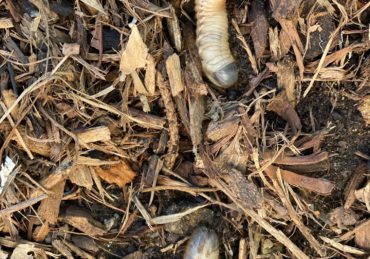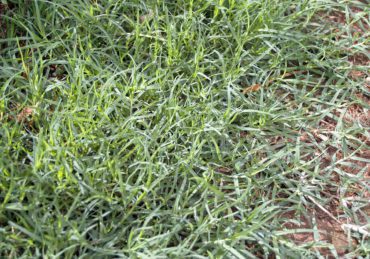Getting rid of crabgrass requires a strategic approach that targets the weed at different stages of its life cycle. You’ll want to start by identifying it early, using methods like manual removal when the soil is moist, so you extract the entire root. Chemical-free solutions like vinegar or boiling water can kill it without harming your lawn. To effectively prevent its return, focus on promoting a healthy lawn, which naturally suppresses crabgrass. Are you ready to investigate these methods further?
What Makes Crabgrass So Aggressive?
To understand crabgrass’s aggression, you need to contemplate its biology; it produces up to 150,000 seeds per plant, which can remain viable for years, ensuring persistent reemergence.
This weed thrives in warm temperatures and quickly colonizes bare patches, overshadowing healthy grass with its low-growing habit.
The Biology Behind the Problem
Although crabgrass might seem like just another weed, its aggressive nature stems from several biological traits that allow it to dominate lawns.
Crabgrass thrives in warm temperatures, germinating when soil hits 55°F. This weed’s rapid growth produces up to 150,000 weed seeds per plant, remaining viable for years.
Its low, horizontal spread maximizes sunlight capture and resource competition, ensuring its persistent reemergence each spring.
Easily hire the best lawn & landscape pros working in your neighborhood.
How It Outcompetes Grass
Crabgrass often outcompetes other grasses by leveraging its adaptability and rapid growth cycle.
It thrives in warm, dry conditions, germinating quickly and producing seeds that sustain its dominance.
Its low profile efficiently absorbs sunlight, shading out slower-growing species.
With shallow roots, crabgrass exploits thin and bare spots, establishing itself where grass coverage is weak.
Its resilience in varied soils makes it a persistent adversary.
How to Identify Crabgrass Before It Spreads
When trying to identify crabgrass before it spreads, recognizing its distinct features is key to effective lawn management.
Look for broad, flat leaves up to 12 inches long, resembling crab legs. Monitor thin, bare lawn spots, especially as soil temperatures reach 55°F.
Early identification prevents seed production, essential for controlling this low-growing annual weed that thrives in warm, dry conditions, avoiding large circular dead spots.
How to Get Rid of Crabgrass in Your Lawn Without Harsh Chemicals
To effectively tackle crabgrass without harsh chemicals, start with manual removal by pulling the weeds when the soil is moist, ensuring you extract the entire root system to prevent regrowth.
Employ natural remedies like spraying a vinegar solution or pouring boiling water directly onto the plants, taking care to protect the surrounding grass.
Furthermore, applying a 2-3 inch layer of mulch can suppress crabgrass seed germination while enhancing your lawn’s overall health.
Manual Removal Techniques
Tackle crabgrass infestations effectively by employing manual removal techniques that prioritize precision and thoroughness.
Hand-pulling crabgrass when the soil is moist guarantees you remove the roots completely, preventing regrowth. Use a garden weeder tool for efficient extraction, and regularly inspect your lawn to remove emerging clumps.
Dispose of pulled plants in a sealed trash bag to avoid seed dispersal, complementing your lawn’s health maintenance regimen.
Easily hire the best lawn & landscape pros working in your neighborhood.
Natural Remedies That Work (Vinegar, Boiling Water, Mulch)
Although opting for natural remedies might seem challenging, they offer practical solutions for eliminating crabgrass without resorting to harsh chemicals. Using vinegar, apply a 20% concentration directly on the weed. Pour boiling water carefully to avoid damaging nearby grass. Mulch with a 2-3 inch layer to block sunlight.
| Method | Effectiveness | Caution |
|---|---|---|
| Vinegar | High | Confirm concentration |
| Boiling Water | Moderate-High | Avoid surrounding plants |
| Mulch | Preventive | Maintain thickness |
How to Get Rid of Crabgrass in the Summer Without Damaging Your Turf
When summer heat encourages crabgrass to thrive, you can effectively manage it without damaging your turf by applying post-emergent herbicides specifically designed for crabgrass control.
Use products like Quinclorac, ensuring they’re applied during the leaf phase.
Combine this with manual removal early in the season, pulling the entire root.
Regular lawn inspections and proper maintenance practices will help sustain a healthy, competitive turf.
How To Stop Crabgrass Before It Starts
To effectively stop crabgrass before it starts, begin by applying a pre-emergent herbicide in early spring as soil temperatures reach 55°F. This timing guarantees crabgrass seeds are targeted before germination. Opt for corn gluten-based alternatives for a natural approach. Monitor the forsythia bloom as a timing cue. Consistent lawn care practices, such as maintaining a 3-4 inch grass height, further suppress crabgrass.
| Timing | Product Type | Lawn Care Practice |
|---|---|---|
| Early Spring | Pre-emergent Herbicide | Maintain Grass Height |
| 55°F Soil Temp | Corn Gluten-Based | Regular Monitoring |
| Forsythia Bloom | Natural Alternatives | Repair Bare Spots |
Lawn Care Habits That Keep Crabgrass Out for Good
To maintain a crabgrass-free lawn, start by mowing your grass to a height of 3-4 inches, which shades the soil and inhibits weed seed germination.
Strategically feed your lawn every 6 to 8 weeks with a balanced fertilizer and water deeply but infrequently to promote robust root systems.
Furthermore, reseed any thin areas promptly to strengthen turf density, ensuring crabgrass can’t establish itself in bare patches.
Easily hire the best lawn & landscape pros working in your neighborhood.
Mow at the Right Height
Achieving a robust lawn involves understanding that the right mowing height plays a critical role in keeping crabgrass at bay.
Mow your lawn to a height of 3-4 inches; this shades the soil, inhibiting crabgrass seed germination. Consistent mowing at this height encourages healthy grass, allowing it to outcompete crabgrass.
Avoid scalping, as it can create conditions favorable for crabgrass establishment. Adjust mowing seasonally for ideal results.
Feed and Water Strategically
While maintaining the correct mowing height sets the foundation for a healthy lawn, feeding and watering strategies further fortify your turf against crabgrass invasions.
Regularly feed your lawn every 6 to 8 weeks to promote dense grass growth that suppresses crabgrass.
Opt for deep watering sessions to build robust root systems, reducing shallow soil moisture that favors weeds and ensuring your grass outcompetes crabgrass for resources.
Reseed Thin Areas to Boost Turf Strength
Strengthen your lawn’s defense against crabgrass by reseeding thin areas to create a robust, competitive turf.
Follow these steps to achieve a thicker lawn:
- Timing: Reseed in late summer or early fall for best results.
- Seed Selection: Choose varieties suited to local conditions.
- Soil Contact: Lightly rake seeds to enhance contact.
- Watering: Deep, infrequent watering promotes strong roots.
Common Mistakes That Help Crabgrass Win
One critical error homeowners make is overwatering their lawns, which leads to shallow root systems and creates a hospitable environment for crabgrass to flourish.
To prevent this, make certain your watering routine encourages deep root growth.
Furthermore, neglecting to apply pre-emergent herbicides before seeds germinate can drastically increase crabgrass.
Address bare spots promptly to block sunlight, and maintain a proper mowing height to deter this invasive weed.
How to Get Rid of Crabgrass with Help from LawnGuru Experts
Getting rid of crabgrass isn’t always easy, especially if it’s already established or keeps returning every season. While DIY methods can work, they often require perfect timing and persistent upkeep. That’s where LawnGuru comes in.
Our experts offer:
- Targeted weed control for crabgrass and other invasive species
- Eco-conscious solutions tailored to your grass type and region
- Real-time updates, fixed pricing, and same-day scheduling, no contracts
If you’re ready to take the guesswork out of weed control, book a LawnGuru pro today and reclaim your lawn the smart way.




